Franco Fontana. Full Color

Franco Fontana. Full Color, Istituto Veneto di Scienze Lettere ed Arti - Palazzo Franchetti, Venezia
Dal 14 February 2014 al 18 May 2014
Venezia
Luogo: Istituto Veneto di Scienze Lettere ed Arti - Palazzo Franchetti
Indirizzo: Campo Santo Stefano 2842
Orari: 10-19; chiuso martedì
Curatori: Denis Curti
Enti promotori:
- Istituto Veneto di Scienze Lettere e Arti
Costo del biglietto: intero € 9, ridotto € 7/ € 6, scuole € 4, famiglie € 22
Telefono per informazioni: +39 041 8620761
E-Mail info: valeria.regazzoni@gmail.com
Sito ufficiale: http://www.civitatrevenezie.it
La prima grande retrospettiva a Venezia di Franco Fontana, oltre 130 fotografie che raccontano la sua lunghissima storia di fotografo conosciuto in tutto il mondo. La mostra, promossa dall’Istituto Veneto di Scienze, Lettere e Arti è curata da Denis Curti e prodotta da Civita Tre Venezie in collaborazione con Venezia Iniziative Culturali.
Colori accesi, brillanti, talmente vibranti da apparire irreali. Composizioni ritmate da linee e piani sovrapposti, geometrie costruite sulla luce. Paesaggi iperreali, più veri del vero, surreali, sospesi, spesso impossibili. Proporzioni ingannevoli in cui non c’è spazio per l’uomo. Figure umane svelate in negativo, sublimate in ombre lunghe. Presenza e assenza contemporaneamente. Corpi come paesaggi, e pianure e colline dai contorni antropomorfi. Questi sono i tratti distintivi che rimandano immediatamente ed in modo inequivocabile al linguaggio visivo di Franco Fontana. Suddivisa in diverse sezioni tematiche, la mostra propone i paesaggi degli esordi (anni ‘60) passando per le diverse ricerche dedicate ai paesaggi urbani, le piscine e il mare.
Nato nel 1933 a Modena, città dove si riscontra già dall’inizio del Novecento una tradizione fotografica piuttosto radicata, Franco Fontana si avvicina alla fotografia nei primi anni Sessanta, secondo un percorso comune a molti della sua generazione, ossia attraverso il mondo degli amatori ma in una città che è culturalmente molto attiva, animata da un gruppo di artisti di matrice concettuale, seppure ancora agli esordi, tra cui vi sono Franco Vaccari, Claudio Parmeggiani, Luigi Ghirri e Franco Guerzoni. Il lavoro di Franco Fontana condivide con questa corrente il bisogno di rinnovamento e di messa in discussione dei codici di rappresentazione ereditati, in campo fotografico, dal Neorealismo, ma pone particolare attenzione e cura anche agli esiti visivi e alla componente estetica della sua ricerca. Nel 1963 avviene il suo esordio internazionale, alla 3a Biennale Internazionale del Colore di Vienna.
Nelle fotografie di questo primo periodo si vedono in nuce alcuni di quelli che diverranno i suoi tratti distintivi. Soprattutto, c’è una scelta di campo decisamente controcorrente rispetto alla maggioranza dei suoi colleghi: è stato tra i primi in Italia a schierarsi con tanta convinzione e fermezza, per il colore e lo rende protagonista, non come mezzo ma come messaggio, non come fatto accidentale, ma come attore. E’ attratto dalla superficie materica del tessuto urbano, da porzioni di muri, stratificazioni della storia, dettagli di vita scolpiti dalla luce. Come fosse un ritrattista, Fontana mette in posa il paesaggio. Il suo occhio fotografico ne sceglie il lato migliore con la consapevolezza che la fotografia, con il suo tempo di posa, gli obiettivi e i diaframmi, vede il mondo diversamente dall'occhio umano.
Nel 1978 Franco Fontana scatta un’immagine-simbolo del suo repertorio, a Baia delle Zagare, in Puglia: una composizione pulita, ritmata da fasce di colore, giocata su pochi toni cromatici, essenziale, sintetica, che sarà impiegata per una campagna del Ministero della Cultura Francese. “Questa foto rappresenta il mio modo di intendere la fotografia”, afferma Fontana. “Io credo infatti che questa non debba documentare la realtà, ma interpretarla. La realtà ce l’abbiamo tutti intorno, ma è chi fa la foto che decide cosa vuole esprimere. La realtà è un po’ come un blocco di marmo. Ci puoi tirar fuori un posacenere o la Pietà di Michelangelo.”
Nel 1979 intraprende il primo di una lunga serie di viaggi negli Stati Uniti: Fontana non approda a nessuna rivelazione, bensì applica il suo codice linguistico, ormai consolidato, a un ambiente urbano altro, rispetto alla sua Modena, ma non per questo alieno o incomprensibile.
Qualche anno dopo, nel 1984, inizia la serie Piscine: porzioni di sinuosi corpi di donna (e a volte d’uomo), esaltate da colori squillanti, in uno spazio conchiuso, sospeso, di cui spesso non vediamo i confini. Nel 2000 inizia la serie dei Paesaggi Immaginari, in cui l’invenzione sul reale arriva ai massimi livelli, rendendo chiaramente manifesto il sottile inganno teorico sotteso alla produzione precedente. In questo caso, il fotografo, che non disdegna la tecnologia digitale, riafferma la propria libertà interpretativa della realtà tramite l’immaginazione. La sua lunga carriera è costellata di riconoscimenti, premi e onorificenze in tutto il mondo, sono più di quattrocento le mostre in cui sono state esposte le sue fotografie e più di quaranta i volumi pubblicati.
Colori accesi, brillanti, talmente vibranti da apparire irreali. Composizioni ritmate da linee e piani sovrapposti, geometrie costruite sulla luce. Paesaggi iperreali, più veri del vero, surreali, sospesi, spesso impossibili. Proporzioni ingannevoli in cui non c’è spazio per l’uomo. Figure umane svelate in negativo, sublimate in ombre lunghe. Presenza e assenza contemporaneamente. Corpi come paesaggi, e pianure e colline dai contorni antropomorfi. Questi sono i tratti distintivi che rimandano immediatamente ed in modo inequivocabile al linguaggio visivo di Franco Fontana. Suddivisa in diverse sezioni tematiche, la mostra propone i paesaggi degli esordi (anni ‘60) passando per le diverse ricerche dedicate ai paesaggi urbani, le piscine e il mare.
Nato nel 1933 a Modena, città dove si riscontra già dall’inizio del Novecento una tradizione fotografica piuttosto radicata, Franco Fontana si avvicina alla fotografia nei primi anni Sessanta, secondo un percorso comune a molti della sua generazione, ossia attraverso il mondo degli amatori ma in una città che è culturalmente molto attiva, animata da un gruppo di artisti di matrice concettuale, seppure ancora agli esordi, tra cui vi sono Franco Vaccari, Claudio Parmeggiani, Luigi Ghirri e Franco Guerzoni. Il lavoro di Franco Fontana condivide con questa corrente il bisogno di rinnovamento e di messa in discussione dei codici di rappresentazione ereditati, in campo fotografico, dal Neorealismo, ma pone particolare attenzione e cura anche agli esiti visivi e alla componente estetica della sua ricerca. Nel 1963 avviene il suo esordio internazionale, alla 3a Biennale Internazionale del Colore di Vienna.
Nelle fotografie di questo primo periodo si vedono in nuce alcuni di quelli che diverranno i suoi tratti distintivi. Soprattutto, c’è una scelta di campo decisamente controcorrente rispetto alla maggioranza dei suoi colleghi: è stato tra i primi in Italia a schierarsi con tanta convinzione e fermezza, per il colore e lo rende protagonista, non come mezzo ma come messaggio, non come fatto accidentale, ma come attore. E’ attratto dalla superficie materica del tessuto urbano, da porzioni di muri, stratificazioni della storia, dettagli di vita scolpiti dalla luce. Come fosse un ritrattista, Fontana mette in posa il paesaggio. Il suo occhio fotografico ne sceglie il lato migliore con la consapevolezza che la fotografia, con il suo tempo di posa, gli obiettivi e i diaframmi, vede il mondo diversamente dall'occhio umano.
Nel 1978 Franco Fontana scatta un’immagine-simbolo del suo repertorio, a Baia delle Zagare, in Puglia: una composizione pulita, ritmata da fasce di colore, giocata su pochi toni cromatici, essenziale, sintetica, che sarà impiegata per una campagna del Ministero della Cultura Francese. “Questa foto rappresenta il mio modo di intendere la fotografia”, afferma Fontana. “Io credo infatti che questa non debba documentare la realtà, ma interpretarla. La realtà ce l’abbiamo tutti intorno, ma è chi fa la foto che decide cosa vuole esprimere. La realtà è un po’ come un blocco di marmo. Ci puoi tirar fuori un posacenere o la Pietà di Michelangelo.”
Nel 1979 intraprende il primo di una lunga serie di viaggi negli Stati Uniti: Fontana non approda a nessuna rivelazione, bensì applica il suo codice linguistico, ormai consolidato, a un ambiente urbano altro, rispetto alla sua Modena, ma non per questo alieno o incomprensibile.
Qualche anno dopo, nel 1984, inizia la serie Piscine: porzioni di sinuosi corpi di donna (e a volte d’uomo), esaltate da colori squillanti, in uno spazio conchiuso, sospeso, di cui spesso non vediamo i confini. Nel 2000 inizia la serie dei Paesaggi Immaginari, in cui l’invenzione sul reale arriva ai massimi livelli, rendendo chiaramente manifesto il sottile inganno teorico sotteso alla produzione precedente. In questo caso, il fotografo, che non disdegna la tecnologia digitale, riafferma la propria libertà interpretativa della realtà tramite l’immaginazione. La sua lunga carriera è costellata di riconoscimenti, premi e onorificenze in tutto il mondo, sono più di quattrocento le mostre in cui sono state esposte le sue fotografie e più di quaranta i volumi pubblicati.
SCARICA IL COMUNICATO IN PDF
COMMENTI

-
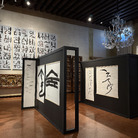 Dal 8 November 2025 al 11 January 2026
Venezia | Museo Correr
Dal 8 November 2025 al 11 January 2026
Venezia | Museo Correr
CARATTERI. Calligrafia e tipografia: Corea del Sud e Stati Uniti
-
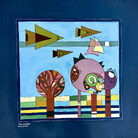 Dal 8 November 2025 al 22 February 2026
Brescia | Museo di Santa Giulia
Dal 8 November 2025 al 22 February 2026
Brescia | Museo di Santa Giulia
Material for an Exhibition. Storie, memorie e lotte dalla Palestina e dal Mediterraneo
-
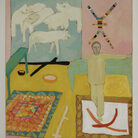 Dal 8 November 2025 al 18 January 2026
Perugia | Perugia, Spoleto e Gubbio
Dal 8 November 2025 al 18 January 2026
Perugia | Perugia, Spoleto e Gubbio
Mimmo Paladino. Antologica
-
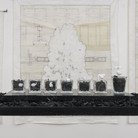 Dal 7 November 2025 al 25 January 2026
Roma | Museo Carlo Bilotti Aranciera di Villa Borghese
Dal 7 November 2025 al 25 January 2026
Roma | Museo Carlo Bilotti Aranciera di Villa Borghese
Silvia Scaringella. Deus sive natura
-
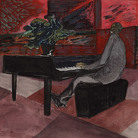 Dal 5 November 2025 al 1 March 2026
Asti | Palazzo Mazzetti
Dal 5 November 2025 al 1 March 2026
Asti | Palazzo Mazzetti
PAOLO CONTE. Original
-
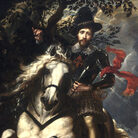 Dal 28 October 2025 al 15 February 2026
Brescia | Pinacoteca Tosio Martinengo
Dal 28 October 2025 al 15 February 2026
Brescia | Pinacoteca Tosio Martinengo
Peter Paul Rubens. Giovan Carlo Doria a cavallo


